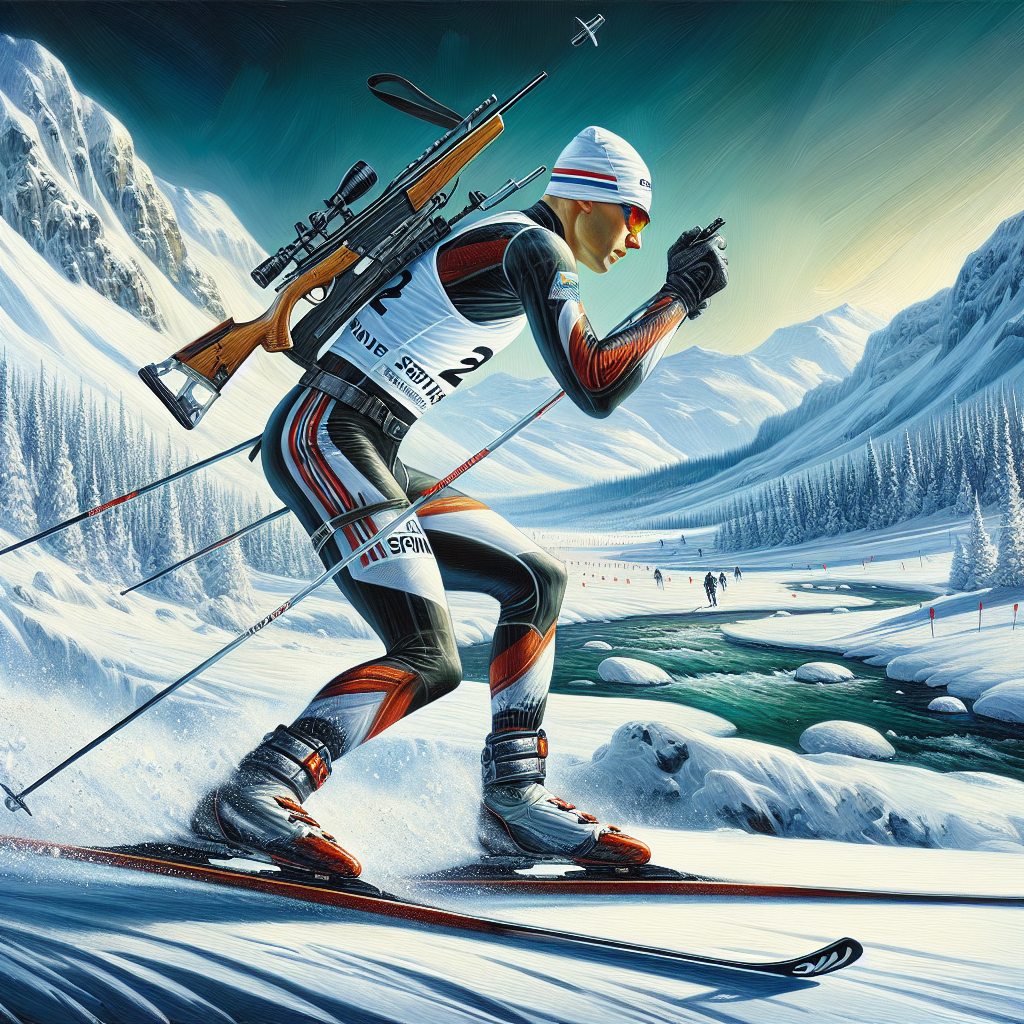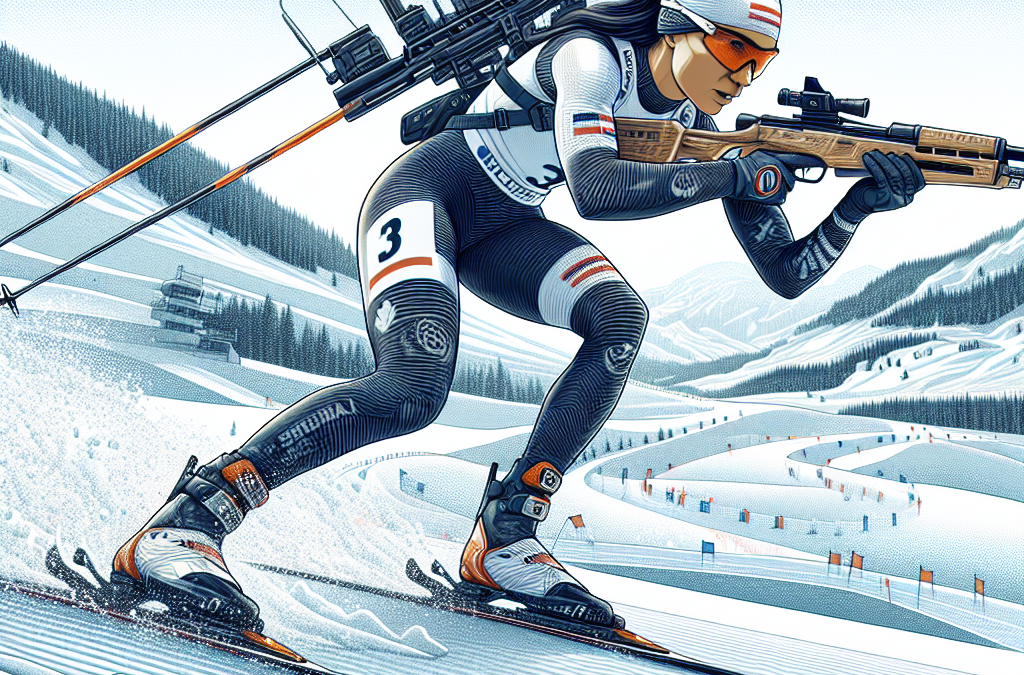Are you hungry for some adrenaline rush, or do you just want to escape your comfort zone and plunge into something truly adventurous? Either way, “The Comprehensive Guide to Biathlon: Skiing and Shooting” offers you all the answers you need. This guide unpacks the thrilling world of biathlon, a winter sport that unfusses the unlikely combination of skiing and shooting, down to the minutest detail. From the core elements and rules to training techniques, equipment essentials, and beyond, it’s everything you need to embark on this extraordinary journey. Be prepared to have your endurance, precision, and control challenged in the most exciting way possible.

Understanding Biathlon
What is Biathlon?
Biathlon is an exciting and challenging winter sport that combines two distinct skills – cross-country skiing and precision rifle shooting. This incredible test of endurance and accuracy originated as a military exercise in Scandinavia, and today it’s a popular competitive sport enjoyed across the world. Each round is a test of the athlete’s physical stamina, mental focus, precision, and tactical intelligence.
The Origin and History of the Sport
The sport of biathlon has its origins over two millennia ago in Ancient Greece, where it was practiced predominantly as a military training exercise. Modern biathlon, as we know it today, started in Scandinavia as a survival skill. Later, it was harnessed by the military as a suitable training regimen for troops stationed in alpine environments. The official sport was established in the mid-20th century and has been a mainstay in the Winter Olympics since 1960.
The Elements of a Biathlon: Skiing and Shooting
At its core, biathlon involves a race where competitors ski around a cross-country trail system, and the total distance is divided into either two or four shooting rounds. On each shooting round, the biathlete shoots at five targets; depending upon the competition rules, the racer incurring a penalty for each missed target, either by adding one minute to the skier’s total time or requiring the skier to ski a penalty loop.
Components of Biathlon
The Skiing Component
Skiing is the endurance element of biathlon. Competitors travel on a course laid out over difficult terrain, changing between two techniques, the classic and the freestyle or skating technique. The skater’s motion is similar to that of ice skating, with long, sweeping strides designed to cover ground as fast as possible.
The Shooting Component
The shooting phase of biathlon requires precision, control, and an incredibly steady hand. Each competitor must be able to bring their heart rate and breathing under control in order to shoot five targets, only a few centimeters in diameter, at a range of 50 meters. The two shooting positions are standing, or prone (lying down), which are executed in that order.
Significance of Speed and Accuracy
A biathlon is about balance – the speed achieved during the skiing component and the accuracy during the shooting. Simply put, the fastest skier might not win if their shooting accuracy is poor. Conversely, slower skiers can make up for lost time with flawless shooting rounds.
Different Biathlon Disciplines
There are various disciplines in biathlon, each with its specific rules and characteristics. Some of the most popular include: the Sprint, Pursuit, Individual, Mass-start race, and Relay races. Each has a different course length, number of shooting rounds, and shooting positions.
Equipment Needed for Biathlon
The Biathlon Rifle: Features and Use
A biathlon rifle is a .22 caliber firearm, which is lightweight, durable, and specifically designed for this sport. It has special features such as a harness to carry while skiing and a cuff to stabilize the rifle during shooting.
Cross-Country Skiing Equipment
Having the correct cross-country skiing equipment is also key to a successful biathlon. This includes properly sized and tuned skis, poles, boots, and bindings. They are lighter and longer than regular skis to allow for maximum gliding capabilities.
Special Clothing for Biathlon
Biathletes wear lightweight, wind-resistant clothing that offers high mobility without compromising on warmth. The most important aspect is that the outfit does not restrict movement, especially during the shooting component.
Other Necessary Equipment
Other equipment includes ammunition, shooting targets, earmuffs for noise reduction during practice, and specialized gloves that provide dexterity for shooting but can withstand cold conditions when skiing.
Rules and Regulations of Biathlon
General Biathlon Rules
Despite its complex nature, the rules of biathlon are quite easy to understand. The main rules are around the skiing trail, shooting rounds, and rules to follow when overtaking or being overtaken by competitors.
Shooting Regulations and Penalties
During each shooting round, the biathlete must hit five targets. Each missed target generally results in additional minutes added to the athlete’s total time or in the biathlon formats, skiing a penalty loop.
Skiing Rules and Regulations
The skiing component has its own set of rules, including where competitors can change tracks and the rules regarding skating within a classic race.

Biathlon Technique
The Skiing Technique in Biathlon
The skiing in biathlon generally uses freestyle (or skate) skiing technique. This involves a coordinated sequence of movements for maximum efficiency and speed.
The Shooting Technique in Biathlon
In the shooting component, the main objective is to achieve stability and control, despite the high heart rate and heavy breathing from the recent skiing. Athletes shoot in both prone and standing positions depending on the event.
Transitions between Skiing and Shooting
A crucial part of biathlon is the transition. This is the moment when a biathlete switches from skiing to shooting. It involves slowing heart rate and breathing for optimal shooting conditions.
Managing Fatigue and Stress during a Biathlon
Biathlon is an exercise in physical and mental stamina. Athletes need to manage their fatigue during the race while remaining focused during the shooting component despite the stress.
Training for a Biathlon
Physical Conditioning for Biathlon
Just like any endurance sport, biathlon requires a high degree of physical fitness. Strength and cardiovascular training are integral to preparation, along with specific cross-country skiing workouts.
Marksmanship Training
Marksmanship training is equally important and can be achieved through regular practice at shooting ranges. Understanding the rifle and the most effective shooting stances can greatly improve success on the shooting range.
Improving Skiing Stamina and Endurance
Long-distance running, cycling, and extensive skiing workouts are all ways in which athletes can improve their stamina and endurance.
Mental Training and Sports Psychology
Biathlon is a demanding sport that not only requires physical strength but also strong mental fortitude. Athletes often employ sports psychologists to help them manage stress and stay focused during competitions.
International Biathlon Competitions
The Winter Olympics Biathlon
Biathlon has been a staple of the Winter Olympics since 1960. It has grown phenomenally and has become one of the most viewed events during the Winter Olympic games.
The Biathlon World Championships
The Biathlon World Championships are held annually except during Olympic years. The competition equally prestigious with the Winter Olympics and it brings together the best biathletes from all around the world.
World Cup Biathlon Circuit
Every year the International Biathlon Union (IBU) holds a series of World Cup events, spread across various countries. It’s a great platform for athletes to show their talent and for audiences to enjoy this energetic winter sport.
Famous Biathletes and their Achievements
There are many famous biathletes who have left an indelible mark in the history of the sport. They include Ole Einar Bjørndalen from Norway who is one of the greatest biathletes of all time with numerous Olympic and World Championship medals.
Biathlon for Beginners
Getting Started with Biathlon
Getting started with biathlon requires some planning and effort as the sport involves integrating two disciplines. Firstly, one needs to be a proficient skier. Secondly, handling a rifle and acquiring shooting skills is a must.
Choosing the Right Equipment
Selecting the right equipment is an important step for beginners. Starting out with reliable, quality gear can make a big difference when learning the techniques of skiing and shooting.
Finding a Biathlon Club
Joining a local biathlon club can provide new-comers with guidance, support, and coaching. It may also help with access to equipment and shooting ranges at discounted rates.
Safety Precautions for Beginners
Safety in biathlon is of utmost importance, especially around handling rifles responsibly. Beginners must ensure they are appropriately trained and supervised during their initial foray into shooting.
Biathlon Variations
Summer Biathlon
Summer Biathlon combines cross-country running with shooting. It provides an opportunity for athletes to stay in shape in the off-season and also provides a good starting point for beginners interested in the winter version of the sport.
Military Patrol
Military Patrol is a team competition and was a precursor to the modern biathlon. It was a demonstration sport at the Winter Olympics and features military skiing techniques along with shooting.
Paralympic Biathlon
Paralympic Biathlon is a variation that enables athletes with a range of physical impairments to compete. It combines cross-country sit-skiing and air rifle shooting.
Other Variations of Biathlon
There are many other variations of biathlon, each with its unique blend of sports. For instance, there’s biathle (running and swimming), triathle (running, swimming, and shooting), and even a Nordic biathlon which includes ski jumping.
Future of Biathlon
Evolution of Biathlon over the Years
Biathlon has come a long way since its military roots. The sport has grown massively in popularity, with increasingly sophisticated training methods, technologies, and the introduction of new competition formats.
Technological Advancements in the Sport
Technological advancements have greatly influenced Biathlon, from advancements in ski and rifle design to high-tech clothing and accessories. Even the way the sport is viewed has changed, with drone cameras and high-speed cameras capturing every second of the action.
Potential Changes and Improvement In Biathlon
As with all sports, the evolution of biathlon continues. Potential changes and improvements are continuously being contemplated by the governing bodies, including technological enhancements, course improvements, and adaptations to stay relevant and exciting within the evolving world of sports.

